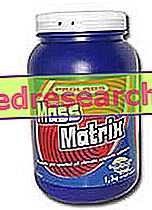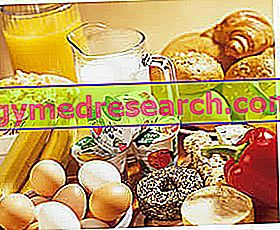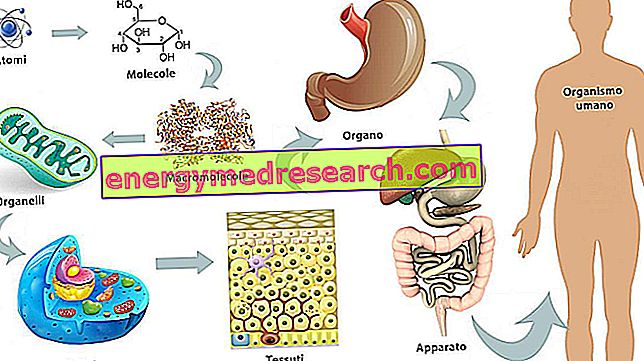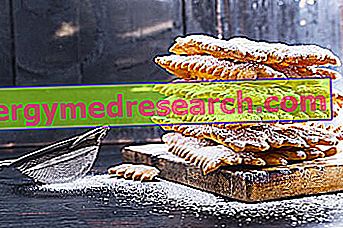
Information on Mass Matrix - Prolabs
MASS MATRIX - PROLABS
Protein, carbohydrate, vitamin and fat supplement
FORMAT
Pack of 1.3 kg and 3 kg cocoa or vanilla taste
COMPOSITION
Maltodextrins with different DE (DE 3-20), whey protein isolate, lean cocoa powder, micronized creatine monohydrate (produced by Degussa), potassium gluconate, micronized L-glutamine, flavors supported on maltodextrin, calcium phosphate, L- Taurine, Magnesium oxide, Emulsifier: soy lecithin, Sweetener: sucralose, Zinc gluconate, Ascorbic acid (Vitamin C), Nicotinamide (Vit. PP), D-alpha-tocopheryl acetate (Vitamin E), Calcium pantothenate (Vitamin E) .B5), Pyridoxine hydrochloride (Vit. B6), Riboflavin (Vit. B2), Thiamine hydrochloride (Vit. B1, Retinol palmitate (Vit. A), Pteroylmonoglutamic acid (folic acid), D-biotin (Vitamin H), Cholecalciferol (Vit. D), Cyanocobalamin (Vit. B12).
| Media Analysis (Gusto Cacao) | Per 100 g (one portion) | % RDA |
| Energy value | 380 kcal / 1614 kj | - |
| Protein (Nx6.25) | 35 g | - |
| Carbohydrates | 56 g | - |
| Grassi | 1.8 g | - |
| Creatine | 3 g | - |
| L-Glutamine | 2 g | - |
| L-Taurine | 500 mg | - |
| Football | 519 mg | 65 |
| Potassium | 360 mg | - |
| Magnesium | 90 mg | 30 |
| Phosphorus | 240 mg | 30 |
| Zinc | 4.5 mg | 30 |
| Vitamin A | 240 mcg | 30 |
| Vitamin D | 1.5 mcg | 30 |
| C vitamin | 18 mg | 30 |
| Vitamin B1 | 0.42 mg | 30 |
| Vitamin B2 | 0.48 mg | 30 |
| Niacin (vit. PP) | 5.7 mg | 30 |
| Vitamin E | 3 mg | 30 |
| Vitamin B6 | 0.6 mg | 30 |
| Folic acid | 60 mcg | 30 |
| Vitamin B12 | 0.3 mcg | 30 |
| Biotin | 45 mcg | 30 |
| Pantothenic acid | 1.8 mg | 30 |
Gainers - this category includes a series of different products but with a particularly complete nutritional profile. Although at first sight they are very similar, the gainers are actually characterized by some important differences, which have a decisive effect on the final quality of the product:
- Proportions between the various nutrients;
- Quality of various nutrients and products of origin;
- Addition of vitamins, trace elements and molecules of various nature.
These are just some of the specific features to consider before making the purchase.
The various peculiarities of the products inevitably also influence the indication, being able to selectively adapt to the nutritional requirements of the pre-race or to the subsequent recovery phase. Although some of these supplements can therefore be better adapted to specific nutritional applications, they are all born with the main objective of warmly supporting the athlete's diet, facilitating an increase in lean mass and its relative weight gain.
It would however be legitimate to ask why it is necessary to use this type of supplement, when it would be enough to increase the caloric impact of the diet. In reality, the use of gainers as COADIUVANTS of a healthy diet is justified by a series of properties and characteristics that are difficult to reproduce with common foods:
- Choice of accurate products, which perfectly adapt to the athlete's nutritional needs (example: low-dextrose equivalence maltodextrin or whey protein)
- Easy modulation of dosages, being able to easily adapt them to the planned diet plan;
- High digestibility guaranteed by selected products and necessary to avoid any functional overloads, which could compromise athletic performance;
- Easy preparation and consumption, which makes them particularly attractive.
Despite the important advantages associated with the use of these supplements, it is necessary to understand how they must necessarily be evaluated as adjuvants, ie as products used to optimize nutrition, and not as meal replacements.
Gainers and sports
As can be easily deduced, the use of mass gainers is particularly suited to all those athletes who need to increase their weight or those training periods in which it is necessary to optimize muscle mass growth. Although this remains the main application, the formulation of new dosages and the addition of specific molecules has made it possible to extend the potential indications to:
- Performance improvement: especially when using products specially formulated for the pre-race;
- Protection of muscle integrity.
One of the most important limits concerning the understanding of the real benefits obtainable is the low experimentation in the scientific field (probably justified by the modest applications of these products), which does not allow to express an opinion free from theoretical assumptions and based on scientific evidence. Despite this limitation, it is nevertheless necessary to consider that abundant part of literature that focuses on well-formulated pre and post-race snacks, not only able to decisively improve performance, but also to contribute to the improvement of body composition.
Product features Mass Matrix - Prolabs
The MASS MATRIX product from PROLABS provides:
59% of Carbohydrates: consisting of maltodextrins with low and medium dextrose equivalence (between 3 and 20), able to guarantee a gradual and prolonged release of energy, avoiding glycemic and insulinemic peaks, as well as the relative danger of reactive hypoglycemia ;
37% of Proteins : derived only from whey, therefore of high biological value and characterized by a rapid digestion profile, capable of inducing an amino acid plasmatic peak just 30 minutes after administration and shown to be able to significantly increase levels of protein synthesis.
4% of fats: a part of which (unfortunately not quantifiable) unsaturated derived from soy lecithin.
Creatine: molecule able to improve muscle contraction and nerve response to stimuli, increase anaerobic performance and reduce the sensation of fatigue, as well as contributing to muscle hypertrophy (as demonstrated by studies that have experimented with the association of this product with proteins and carbohydrates in the immediate recovery phase);
L-Glutamine : amino acid important from the metabolic point of view (optimizes the detoxification from ammonia), and physiological (supports the immune capacity during periods of particularly intense training and acts as the central precursor of glutamate, neurotransmitter with marked excitatory activities);
Taurine: derived from sulfur amino acids which is part of the synthesis of bile salts. However, its importance in terms of sports supplementation is not due to this property, but to the detoxifying, antioxidant and myoprotective action.
Vitamins of group B: fundamental in supporting the dense crossroads of metabolic reactions, and necessary to guarantee the correct use of the various nutrients. The addition of B vitamins is an important choice in terms of nutritional economy, as their needs increase significantly with increasing food intake.
Vitamin C: ascorbic acid L, a powerful antioxidant able to regenerate vitamin E, able to effectively counteract the damage induced by intense exercise, capable of significantly increasing the intestinal absorption of iron, as well as reducing and activating folic acid in the relative coenzymatic forms.
From a sporting point of view the aforementioned effects take the form of a reduced feeling of fatigue and a consequent improvement in performance.
Vitamin E: a fat-soluble vitamin with a marked antioxidant power, capable of protecting PUFAs from oxidation while preserving cellular functionality (PUFA = polyunsaturated fatty acids, abundantly present at the membrane level).
In sports, vitamin E (generally used at high dosages) - also associated with other antioxidants - has shown absolute success in reducing oxidative markers, reducing the sensation of fatigue and muscle damage, enhancing the body's antioxidant capacity and some cases also improving aerobic capacity.
Vitamin D: a fat-soluble vitamin characterized by a series of different molecules, which require hydroxylation reactions before being transformed into the active form. It is part of the calcium metabolism, facilitating intestinal absorption and making it more available to various functions (including muscle contraction). Vitamin D also appears to be involved, like steroid hormones, in a series of molecular mechanisms probably important in the process of cellular differentiation.
Minerals: they are a series of elements present in very small quantities in our body, but able to contribute substantially to the correct cellular functioning. They are in fact involved in maintaining osmolarity, in supporting the enzymatic function of different enzymes, in regulating the processes of muscle contraction, and in controlling cellular function by acting as second messengers. We can therefore easily understand how physical activity on the one hand and the increase in caloric intake on the other (mediated by extremely refined products), increase the need for these trace elements.
Recommended use by the company - Mass Matrix - Prolabs
Prepare the product by mixing 5 scoops = 100 grams with about 200 ml of water, milk or other liquid. It is recommended to take the product immediately after physical activity, or as a snack during the day, away from the main meals.
Use in sports - Mass Matrix - Prolabs
As with all the other gainers examined, also for this reason it is not possible to define a valid and effective dosage a priori. In fact, this should inevitably be related to the physiological and nutritional conditions of the athlete. Despite this, the indication suggested by the manufacturer to prefer taking it on an empty stomach, during snacks or in any case away from meals is valid, bearing in mind that the 100 grams offered could be excessive for certain athletes, especially non-competitive athletes.
The product in question offers a ratio between carbohydrates and proteins very similar to the 3: 1 suggested by the scientific literature, with a composition in maltodextrin which is suited to the nutritional and energy needs of a pre-workout snack, taking into account the marked antioxidant qualities of the various vitamins and some amino acids present here. Unfortunately, the protein quality does not seem to adapt to the precompetitive ration, given the absence of casein or BCAA, which would certainly have contributed to muscle protection and energy optimization during the performance.
Consequently it would be desirable to divide the daily ration into two assumptions, to be carried out before training (at least 40 minutes before) and immediately after, in order to optimize both glycogen resynthesis and protein synthesis.
Mass Matrix side effects - Prolabs
Although no potential side effects are described in the literature, it should always be taken into account that the excessive introduction of these products could cause nausea, vomiting, diarrhea and gastrointestinal symptoms.
Instead, it is very important to reiterate the potential effects associated with a prolonged and unbalanced administration of these products, which would inevitably result in a weight gain with related physical and metabolic disorders.
Precautions for use Mass Matrix - Prolabs
The product is contraindicated in cases of renal or hepatic disease, cardiovascular disease and / or hypertension, during pregnancy, during lactation and under 14 years. In the event of prolonged use (over 6/8 weeks), medical advice is required.
This article, elaborated on the critical re-reading of scientific articles, university texts and common practice, is for informational purposes only and is therefore not a medical prescription. It is therefore always necessary to consult your doctor, nutritionist or pharmacist before starting to use any kind of supplement . Further information on the critical analysis of Mass Matrix - Prolabs.




